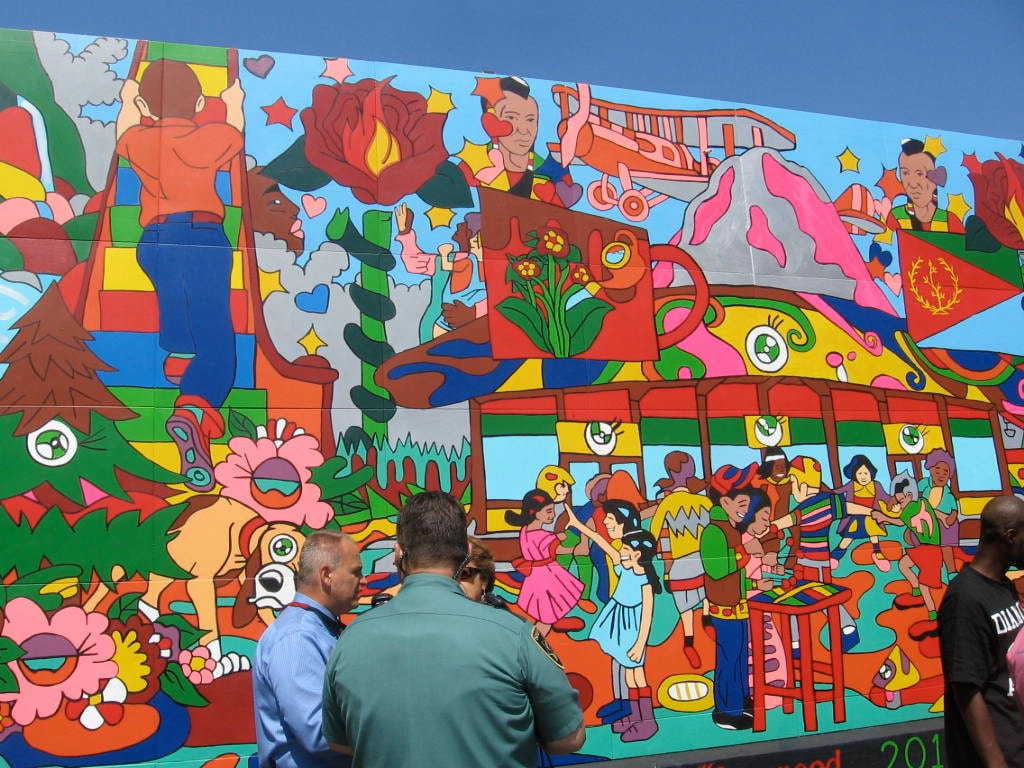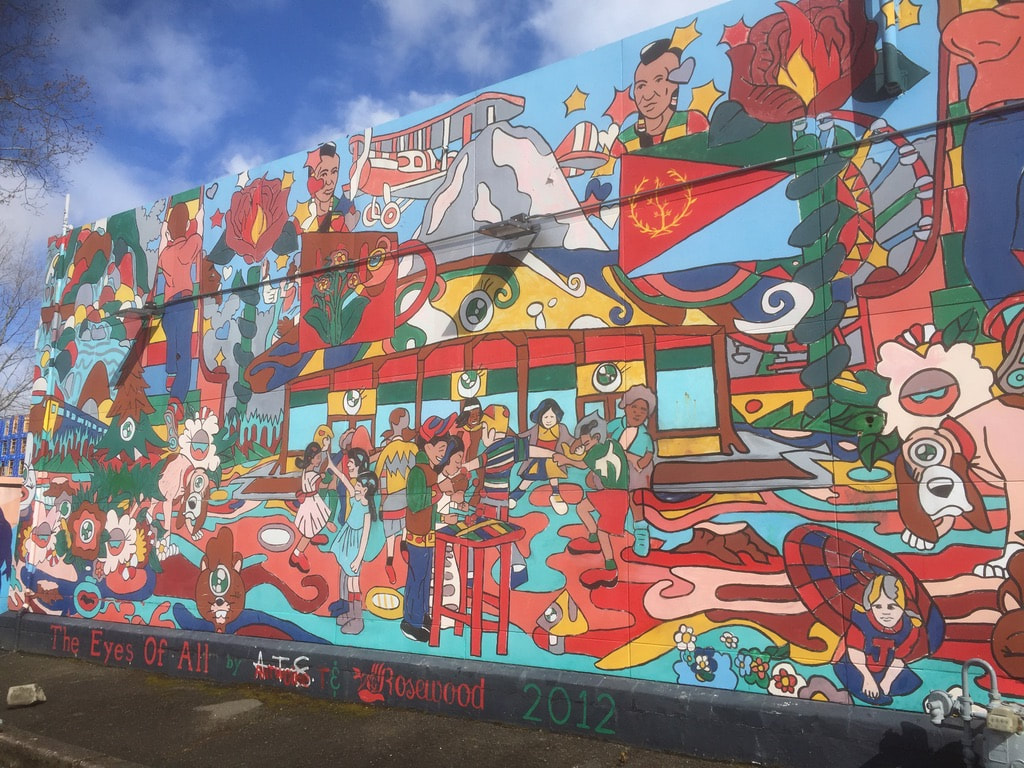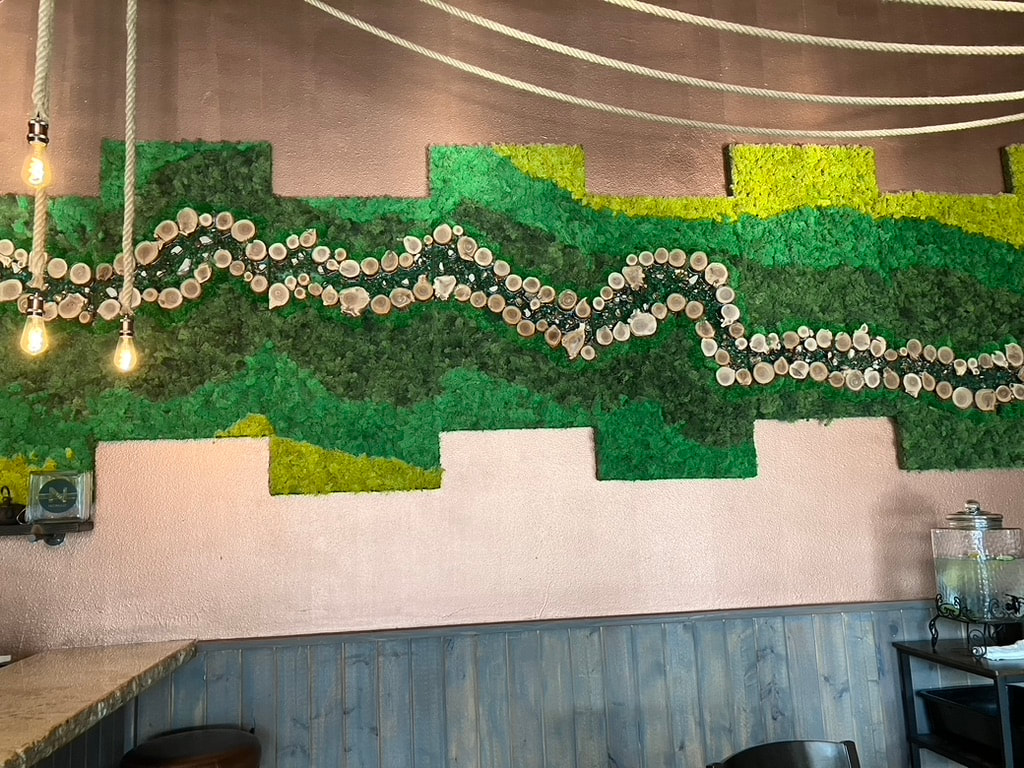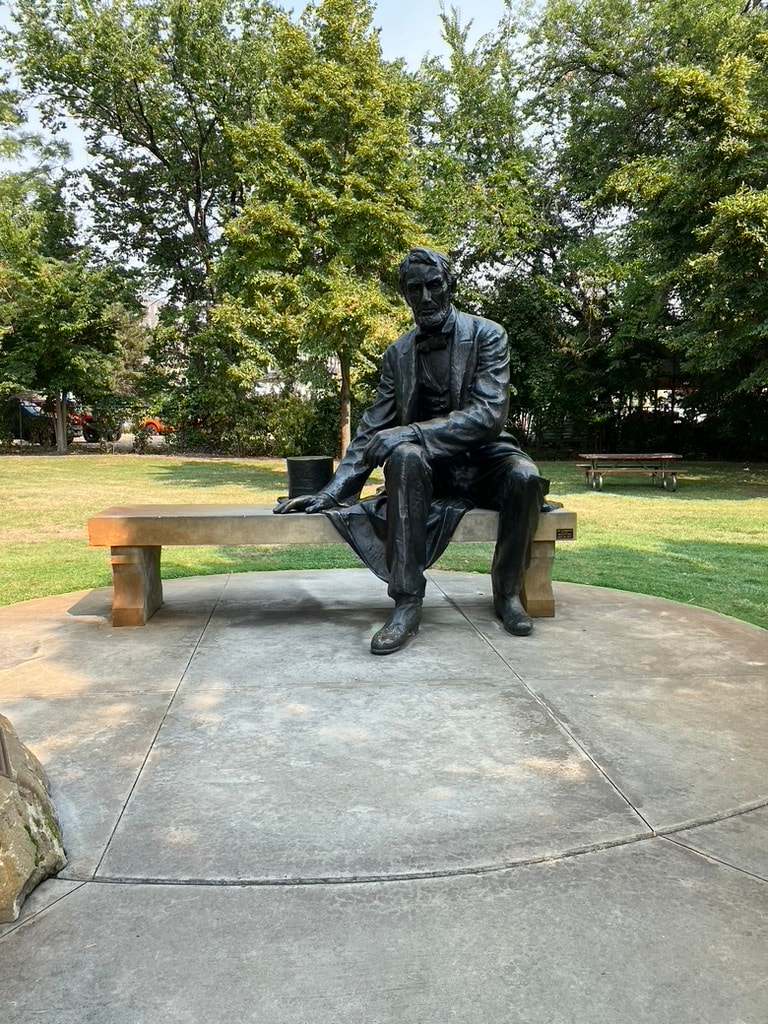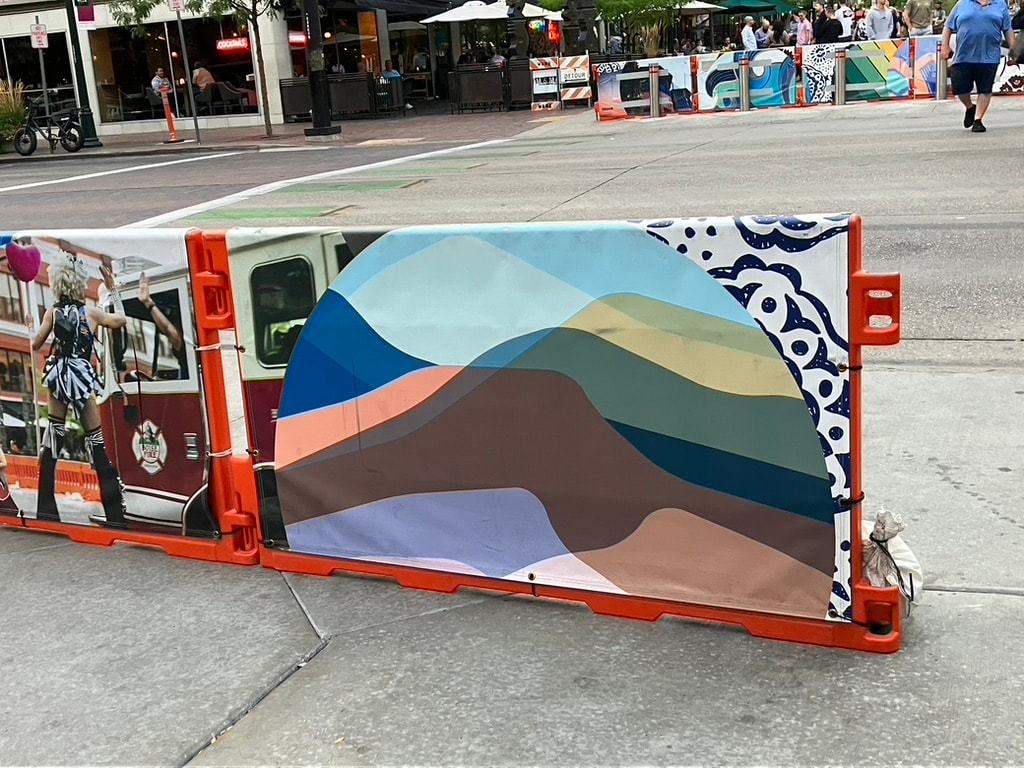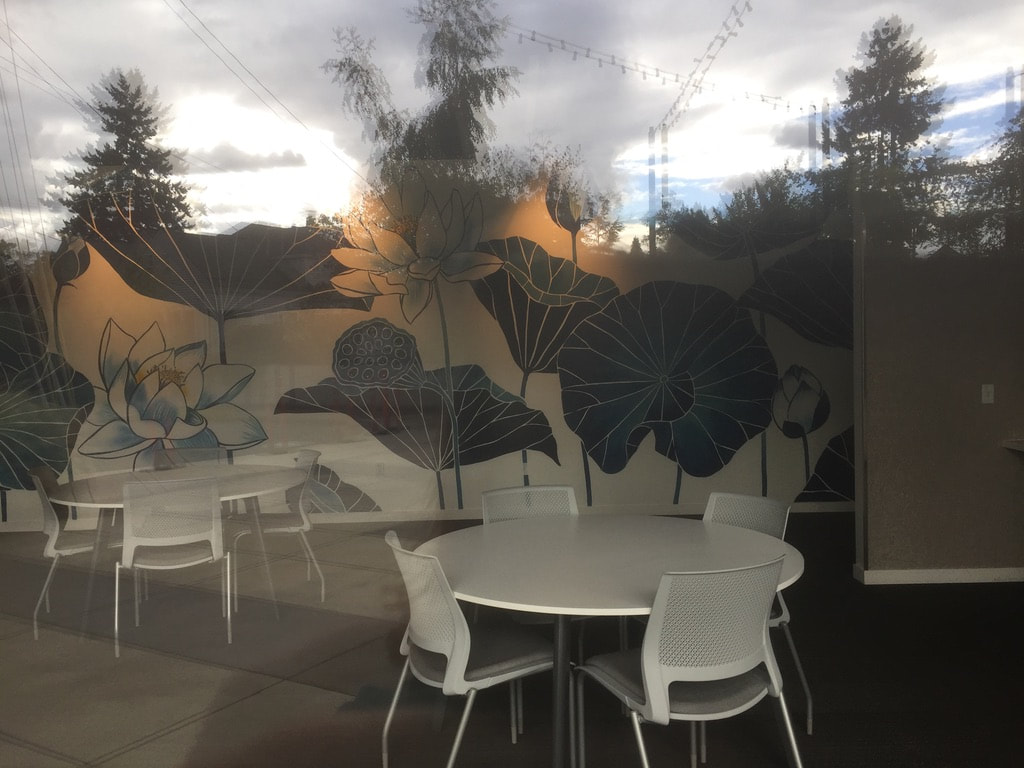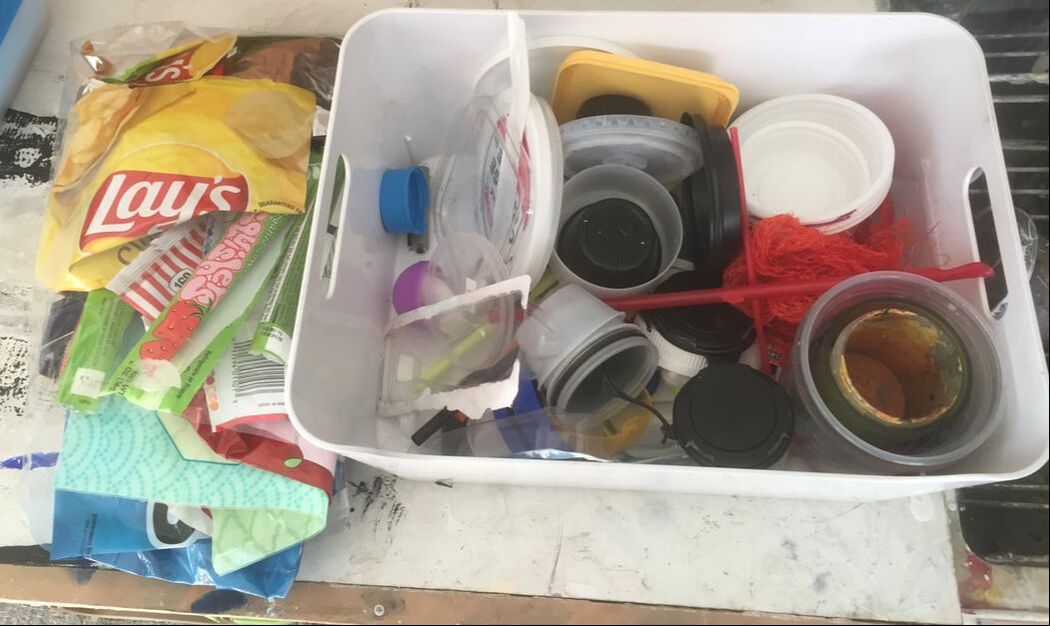These first portraits have been made in the last few years, as I experiment with different kinds of 'trash' materials I have around the house. But my love of collage goes back nearly twenty years, when I made my first magazine paper collage (the musician trio, based off a sketch). I imagine you can tell what these are made of, but just in case: golf tees, dried paint scraps, food packaging, postage stamps, magazine paper and cardboard.
|
I made this "Steampunk Spice Cabinet" out of an old medicine cabinet and some hardware, It was raffled off for the ReBuilding Center's Salvage Showdown. Watch the video to see how it is customizable! Now that some of my work has been around 15-20 years, I can see how it looks over time. Painted murals are pretty durable and should last 15-25 years outside with just a slow fade. But the following circumstances will speed it up considerably: #1 WATER Fourteen years after it was painted, parts of the north-facing flag mural remain fairly bright, and the shading still shows up nicely. The problem is the drainage that spills from the street above; the amount of rain in Portland makes anything painted below grade or near gutters questionable. #2 SUN South-facing walls will always wear the fastest, and this Rosewood Mural doesn't have a bit of shade to help it. You'll notice that the neon colors (espeically the bright magenta) doesn't fare as well as the more natural-based colors, which is why I usually avoid them. Considering this is nearly ten years later, its holding up pretty well. #3 LIGHT, IN GENERAL.... and LESSER MATERIALS
My first collage mural uses recycled magazine paper. After fourteen years of continued exposure to overhead lights and air, the color slowly leaches, somewhat unevenly. These days I use better varnish that has some UV Protection, but its porousness means that paper will never last as long as plastic paint will. In my first residency since the pandemic, I worked with four third-grade classes at Woodstock Elementary to create murals on Dibond panels. They each represent a season along with one of the core values of the school (Compassion, Perseverance, Curiosity and Integrity) and and are mounted on the garden shed near the playground.
I loved walking around downtown Boise, not least because of the great public art that could be found around every corner. Here are just some of the things I ran into.
I've heard many people took to gardening and baking during the pandemic, but I took to walking for sanity. Luckily, nomatter which direction I leave from my front stoop, I can usually find some small creative expression that never fails to make me smile. Here are some examples.
I've been reading about microplastics and generally thinking about trash, as Portland has been overwhelmed with garbage lately. I know the trash that ends up on streets from our houselessness problem is a mere fraction of how much we throw away legally. So for the month of August, I gave my house the Plastics Challenge: collecting all the plastic we normally throw away. This is minus all yogurt containers and soda bottles that are already recycled by the city. That's JUST thirty days below. It was sobering. And made me mad at Trader Joes. Who needs plastic on cucumbers??? But there is good news.
Which is still too much and I know can't bring myself to trash anyway. I'm dreaming of ways of turning it into art. Here are some mobiles and other acetate experiments from the studio. I'm inspired by the Washed Ashore, who turns beach trash into huge community projects.
My latest public art project, Common Threads, spans five stories at the new Patricia Reser Center for the Arts in Beaverton. Working with artists Antwoine Thomas, Van Cooley, and Sara Siestreem (Hanis Coos), we completed our design before the pandemic hit and are delighted that the project went ahead on schedule. Read about our design. Watch a short video about the Patricia Reser Center. |
Categories
All
Sign Up Now To receive quarterly e-newsletters on all my creative adventures. |





